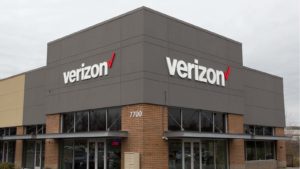
It’s a difficult time to be an income investor. Interest rates are climbing in the U.S. to levels not seen in years, but the average dividend yield of the S&P 500 Index remains relatively low at under 2%.
Fortunately, there are still many dividend stocks with yields of 5% or more. Even better, investors do not have to sacrifice quality.
Multiple high-yield stocks have sustainable dividends with room for dividend growth in the future. The following 5 stocks have yields above 5%, with durable competitive advantages and long-term growth potential that provide safety to their dividends.
Auburn National Bancorporation (AUBN)

Auburn National Bancorporation (NASDAQ:AUBN) is a bank holding company with total assets of approximately $1 billion as of Sept. 30. Through its principal subsidiary, AuburnBank, the company provides a full range of banking services to commercial and retail customers.
AuburnBank is community-oriented and focuses primarily on offering commercial and consumer loan and deposit services to individuals, and small and middle market businesses in East Alabama, including Lee County and surrounding areas. The bank has eight offices and 13 ATM locations throughout the communities it serves. It was founded in 1907 and has 150 employees.
On Oct. 26, Auburn National released its third-quarter 2023 results for the period ending Sept. 30. For the quarter, the company reported net earnings of $1.5 million compared to $2 million for the same quarter last year. Reported earnings per diluted share for the same periods were 43 cents and 57 cents, a decrease of 24.6%.
For the first nine months of 2023, net earnings were $5.4 million, or $1.54 per share, compared to $5.9 million, or $1.67 per share, for the same period in 2022. The company faced a difficult operating environment in the third quarter due to increased market interest rates and competition for deposits. Despite higher deposit costs, the company still benefited from strong loan growth, good asset quality, and lower deposit costs compared to its peers.
The company has increased its dividend for 22 consecutive years. During the past five years, the company’s dividend payout ratio has averaged around 48%. Auburn National‘s dividend is comfortably covered by earnings at the moment. AUBN stock yields 5.2%.
Evergy (EVRG)

Evergy (NASDAQ:EVRG) is an electric utility holding company incorporated in 2017 and headquartered in Kansas City, Missouri. Through its subsidiaries Evergy Kansas, Evergy Metro and Evergy Missouri West, the company serves approximately 1.4 million residential customers, nearly 200,000 commercial customers and 6,900 industrial customers and municipalities in Kansas and Missouri.
In early November, Evergy reported financial results for the third quarter of fiscal 2023. The company was hurt by unfavorable weather, lower weather-normalized demand and higher interest expense and depreciation. As a result, its adjusted earnings per share dipped 6% over the prior year’s quarter, from $2.00 to $1.88, though it exceeded the analysts’ consensus by 4 cents.
The business outlook of Evergy is positive, as the utility has proved resilient to rising interest rates and high inflation. Due to the unfavorable weather in the third quarter, management lowered its guidance for adjusted EPS in 2023 from $3.55-$3.75 to $3.55-$3.65. However, it reiterated its guidance for 6%-8% adjusted EPS growth off the level of $3.30 until 2025.
The subsidiaries of Evergy operate on a fully regulated retail utility model in Missouri and Kansas. Thus, they do not face any competition in these markets. This typical utility model, which generates reliable and growing earnings, is undoubtedly a strong competitive advantage. Another major advantage of utilities is their resilience to recessions. Even during the fiercest recessions, people do not cut electricity consumption.
Moreover, it has a reasonable payout ratio of 71% and its expected dividend growth rate of 6%-8% per year until at least 2025. EVRG yields 5.1%.
Verizon Communications (VZ)

Verizon Communications (NYSE:VZ) was created by a merger between Bell Atlantic Corp and GTE Corp in June 2000. The company is one of the largest wireless carriers in the country. Wireless contributes three-quarters of all revenues, and broadband and cable services account for about a quarter of sales. The company’s network covers about 300 million people and 98% of the U.S.
On Oct. 24, Verizon reported earnings results for the third quarter for the period ending June 30. For the quarter, revenue declined 2.7% to $33.3 billion, but this was in-line with expectations. Adjusted EPS of $1.22 compared unfavorably to $1.32 in the prior year. However, this was 4 cents more than anticipated. Verizon had postpaid phone net losses of 51,000, but this was an improvement both on year-over-year and sequential basis. Revenue for the Consumer segment declined 2.3% to $25.3 billion, though wireless service revenue improved 2.9% due to higher average revenue per account.
Free cash flow for the first nine months of the year totaled $12.4 billion, compared to $14.6 billion last year. Free cash flow for 2023 is projected to be $18 billion, $1 billion higher than previously expected.
While the current net debt level is still high, it has been reduced recently. One of Verizon’s key competitive advantages is that is often considered the best wireless carrier in the U.S. This is evidenced by the company’s wireless net additions and very low churn rate. This reliable service allows Verizon to maintain its customer base as well as give the company an opportunity to move customers to higher-priced plans. Verizon continues rolling out its 5G service.
Verizon offers a very high and stable dividend yield. The company has increased its dividend for 19 years. VZ stock yields 7.4%.
On the date of publication, Bob Ciura did not hold (either directly or indirectly) any positions in the securities mentioned in this article. The opinions expressed in this article are those of the writer, subject to the InvestorPlace.com Publishing Guidelines.




